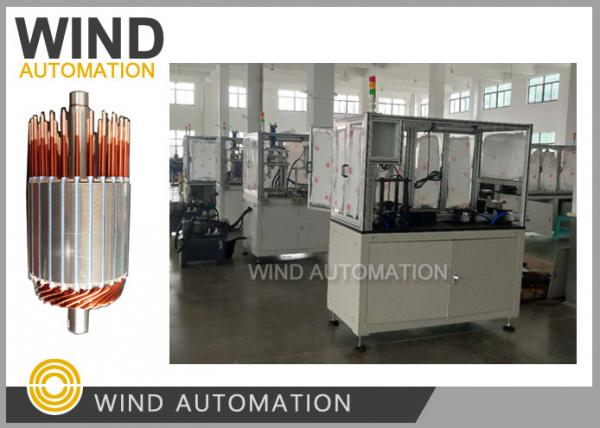

The loss of range for a motor similar to the VW ID3 base range of 346kms is less than 1,5km. The manufacture of aluminum has significantly less environmental impact than the manufacture of copper. of copper costing over $80.00 and this can be replaced by 2.5kg of aluminum costing $7.00. This allows the overall combined DC and AC conductivity of the windings to equal or lower the original copper losses and so do not negatively affect the performance of the motor or its efficiency.Ī typical hairpin motor using copper hairpins consumes around 8kg. The slot conductors remain the same size as the copper they replace. The end-windings forming part of this conductor are much larger in cross section than the slot conductors. We have an internal dedicated departmentwith full-time technicians devoted to the constructionof prototypes, prototype machines,and testing. After years of development, and with the maturity of motor technology and equipment, motor windings have gradually developed from the previous round copper wire design to the flat copper wire winding design. Our experience proudly range from general specificationsto the final design and performance evaluations. Hairpin motors are currently mainly used in new energy vehicles. The hairpins are powder coated (or vortex sintering) directly after induction heating. The stator stack is clamped, the twisting unit is positioned, and the layer is twisted through multiple stages until complete. V-Cat is a form of hairpin winding in which the end-windings and slot conductors are formed in aluminum using conventional die casting. We produce winding systems for stators of electric motors,alternators, and generators. The hairpin ends are twisted in the stator, which ensures high-performance functionality. In a hairpin motor the AC losses typically exceed the DC losses and the result is that the use of aluminum without any increase in conductor size in a hairpin motor results in very little loss of efficiency.Ī recent development called Variable Conductor Area Technology (V-Cat) allows copper to be replaced by Aluminum in EV motors without any loss of efficiency saving considerable cost. However, when copper is replaced by aluminum in a hairpin motor it is found that the AC losses in the aluminum are much less than the AC losses in the copper, when all the AC losses are properly accounted for.

For this reason, copper is the preferred material for most electric motors and almost all EV motors. However, aluminum has lower conductivity than copper and the aluminum conductors need to be 1.6 times larger than what would be needed by copper in order to maintain the same performance and efficiency. It can carry electrical current for less than 15% the cost of carrying the same current, using copper. Aluminum is the most cost-effective conductor of electricity available.


 0 kommentar(er)
0 kommentar(er)
